Google Pixel 9 Pro Fold vs Samsung Galaxy Z Fold 6: here comes the rivalry!
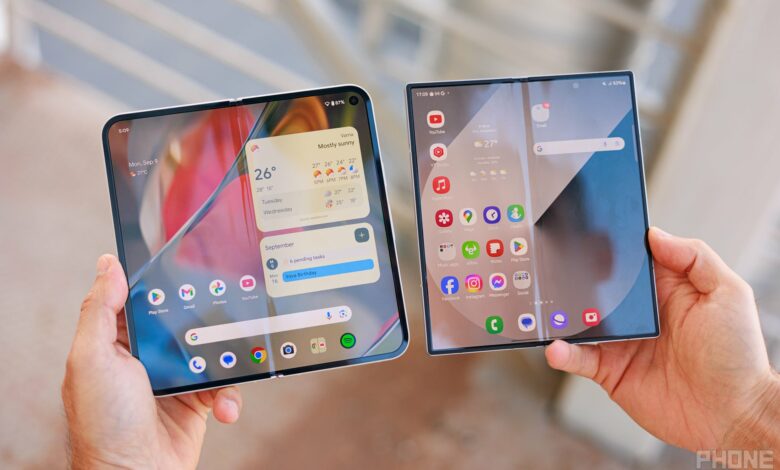
Intro
Samsung’s Galaxy Z Fold 6 is about a couple of months old now, and it has settled in… whether it’s disappointment that it didn’t take many risks, or it’s awe with how Samsung has perfected its take on the foldable formula — yeah, it’s settled in.
Pixel 9 Pro Fold vs Galaxy Z Fold 6 differences explained:
| Pixel 9 Pro Fold | Galaxy Z Fold 6 |
|---|---|
| Thin body, wider 20:9 cover screen | Slightly thicker, cover screen is narrower at 22:9 |
| Bigger main screen, 8-inch, 18.6:18 ratio | 7.6″ main screen, 21.9:18 ratio |
| Triple camera system | Triple camera system |
| Google Tensor G4 custom chipset | Qualcomm Snapdragon 8 Gen 3 for Galaxy |
| 256 GB / 16 GB base option | 256 GB / 12 GB base option |
| 4,650 mAh battery expected | 4,400 mAh battery |
| 21 W wired charging 7.5 W wireless |
25 W charging 15 W wireless |
Table of Contents:
Design and Size
Hey, look, we can all be Pac-Man
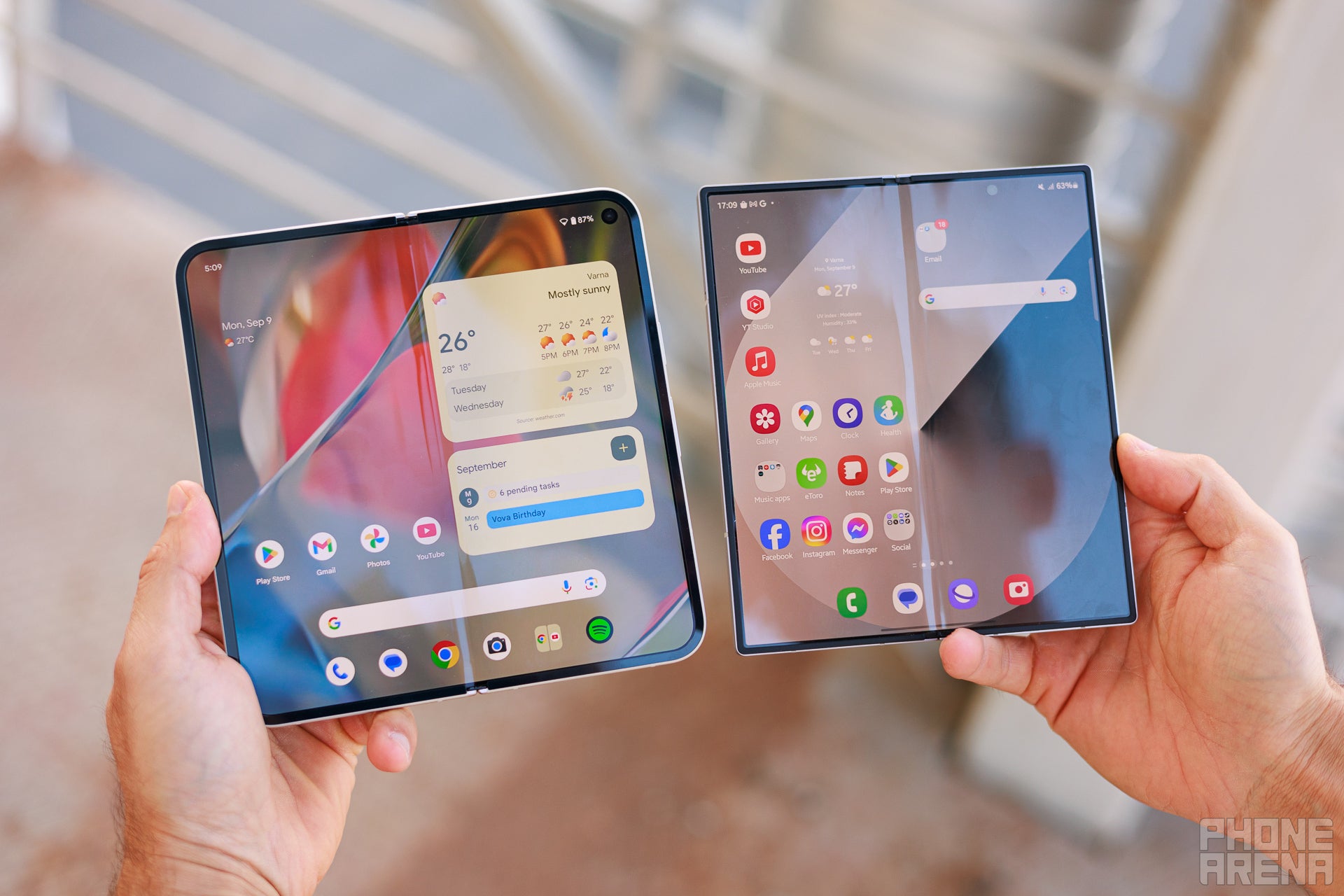

Google takes a slightly different path to designing its foldables. While Samsung insists on keeping the cover screen narrow, so it’s more one-hand, single-thumb-friendly, Google spreads out the Pixel Fold to be wider and thinner. In other words — it feels more like a “regular smartphone” when closed up.
This is all to say that yes — the Google Pixel 9 Pro Fold feels more like a “regular” smartphone when folded — definitely less of a “brick” than the Galaxy Z Fold 6. The latter has a tall and narrow 22:9 cover screen, which can feel a bit cramped, especially if you put a case with a protective lip around the bezel — it’s definitely meant for quick looks and swipe-typing with one finger instead of really diving in (that’s what the main display is for!).
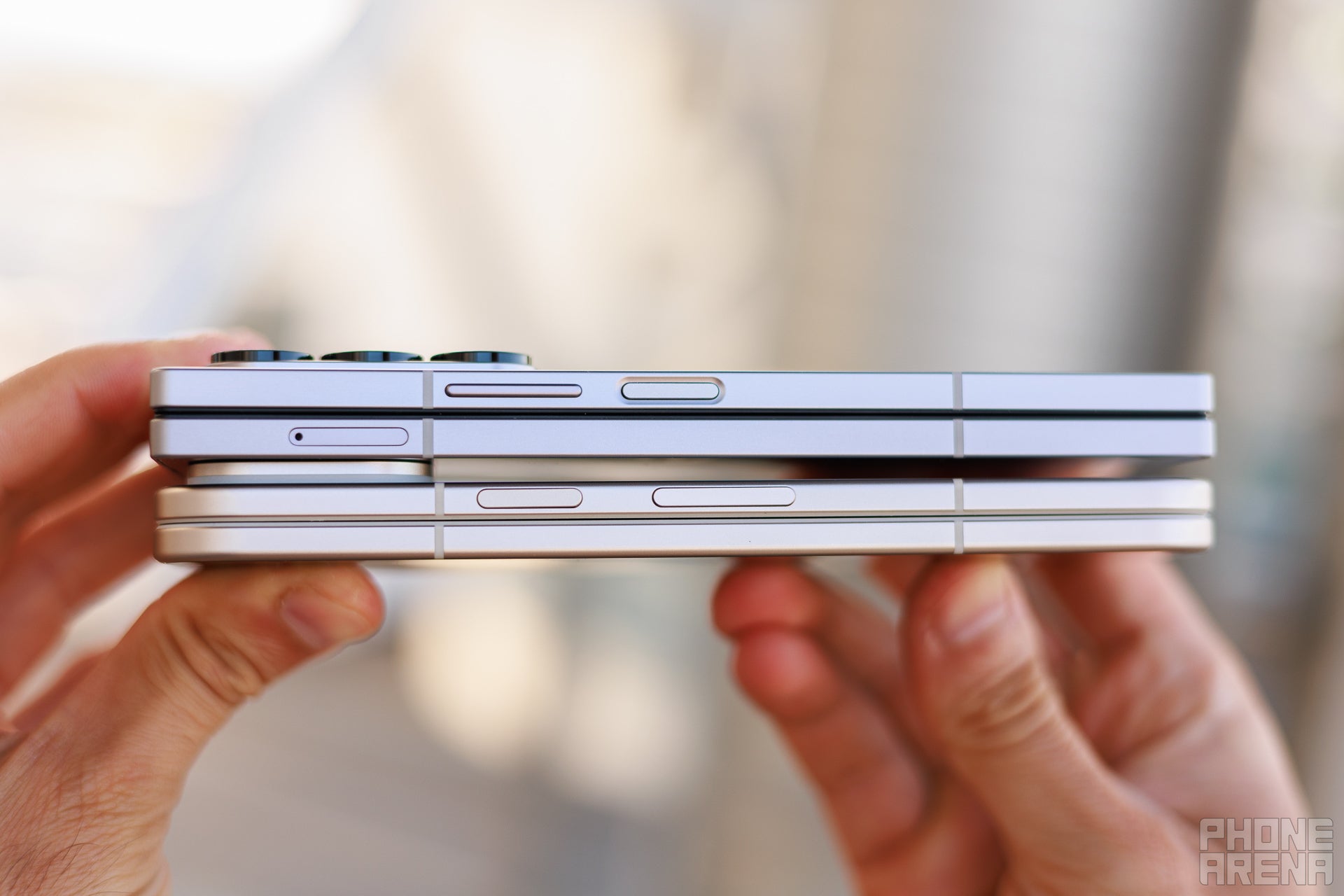

Last year’s Pixel Fold had an OK-feeling hinge, but it got some criticism for its not-so-great spring action. A Pixel Fold wouldn’t open up fully flat, unless you forced it, which was not great. But the Pixel 9 Pro Fold feels awesome — maybe a bit tighter and more reassuring than the Galaxy Z Fold 6, even. Maybe we are just imagining it because it feels new and different — really, both of these are peak mechanical products.
No upgrades to ingress protection from the Google camp. The Pixel 9 Pro Fold comes with IPX8 water-resistance, where the Galaxy Z Fold 6 now has IP48 rating for limited particle protection, together with the water-resistance.
You will notice a new camera module on the back of the Pixel 9 Pro Fold — it’s a huge square, not a vizor, and it’s moved to the upper-left corner of the phone’s back. So, if you hated the horizontal strip of the other Pixel phones, this one is something different!
That’s also where the Z Fold 6 has its triple-lens array, which in itself is not exactly small. Safe to say, both of these phones will refuse to lie flat on a table, unless outfitted with a rather thick case.
The new, thinner Pixel 9 Pro Fold, is lighter than before, but still a bit weighty at 257 g. The Galaxy Z Fold 6 is kind of on the light side — for a foldable, that is — weighing in at 239 g.
For biometrics, both of these phones feature a fingerprint scanner in the power button. Both are super-snappy and we haven’t gotten failed readings from them. Though, we do feel like registering a fingerprint takes a bit longer with more touches on the Pixel. Though, this shouldn’t be a problem for the regular user out there who only gets the one phone, just a slight annoyance for the reviewer who tests these often.
Both phones will also allow you to register your face for face unlock. However, Google’s face unlock is bolstered by AI for increased security — so much so that banking apps will now accept it. That’s pretty impressive for something that only uses a 2D shot from the selfie camera, instead of a full Face ID array, for example.
Display differences


So, we sort of know what we are headed into here — OLED panels, all around, inside and out on both phones. Obviously, Samsung has been cooking its own AMOLED screens for a while now, and it is even accepting orders from other manufacturers — Google included.
The Galaxy Z Fold 6 has a 6.3-inch cover screen, 120 Hz, 22:9 (approximate) aspect ratio, and a 7.6-inch main screen, 120 Hz, 22:18 (approximate) aspect ratio. The Pixel 9 Pro Fold responds in kind with a 6.3-inch external display, 120 Hz, with an aspect ratio to the tune of 20:9. Inside, it has a main screen, which is almost square-shaped (20:20.8 ratio) and about 8 inches in diagonal.
On the Pixel 9 Pro Fold, we have a 120 Hz Actua Display outside, peak brightness of 2,700 nits. Its main screen is a 120 Hz Super Actua Display, also 2,700 nit peak brightness. The Galaxy Z Fold 6 offers similar experience with its Dynamic AMOLED x2 panels, both 120 Hz, and both with 2,600 nit peak brightness.
The cover screens of the Pixel 9 Pro Fold and Galaxy Z Fold 6 are protected by Gorilla Glass Victus 2.
For full screen brightness (not peak), both the Pixel 9 Pro Fold and Galaxy Z Fold 6 are excellent — the former reaching further up beyond 1,500 nits, which is well bright enough to be looked at even under the scorching sun. For minimum brightness, the Z Fold 6 scores a slight win, hitting 1 nit. 1.5 nits on the Pixel 9 Pro Fold is in no way bad, it’s the most sensitive eyes out there that might find it a bit grating when using by the bed at night.
For colors, both of these screens look great — vibrant, contrasty, mostly accurate. But the Pixel 9 Pro Fold pulls a bit more towards the teal cast than the Galaxy does, so when held up side by side — the Z Fold 6 scores a slight win here.
Performance and Software
Tensor G4 coming in!


Google is still on the path of making its own silicon for its own phones, and that’s cool and commendable. The Tensor has reached its G4 generation this year, but our hopes for performance aren’t super-high. Google touted numbers like 17% faster app launching and 20% faster web browsing than before, plus increased battery efficiency when taking photos and binging YouTube.
But no actual details on clock speeds and manufacturing process yet. Par for the course — the Tensor was never meant to destroy benchmarks. It’s built to support Google’s vision of AI and machine learning, so it invests and leans heavily into NPU processes. The Tensor G4, specifically, has been designed in partnership with Google’s Deepmind team.
Don’t get us wrong, Tensors are typically powerful enough to run the stock Android, smart enough to give brains to the Google Assistant and now — Gemini, and have enough headroom to last through the years.
The benchmarks show us as much. The Tensor G4 only gets somewhat close to the Snapdragon 8 Gen 3 in single core performance, and while that’s cool for single-task oriented apps, these phones are built around multi-tasking. And when it comes to the 3DMark tests — even the lowest score the Z Fold 6 got was still higher than the Pixel 9 Pro Fold’s top score. That’s a wild discrepancy.
Does the Pixel 9 Pro Fold run bad? No… we find it snappy, fun, responsive. Would we trust it to have futureproof headroom? Not with those numbers — we are much more enamored by the Z Fold 6’s raw power.
Both companies promise 7 years of software updates for these expensive phones, which is good for peace of mind. It’s worth noting that since Android is Google’s brainchild — Pixels do get their updates quite quickly and on time. Samsung has gotten much better over the years — gone is the meme that “Android 15 is out, this means Samsung is getting Android 14 this year!”.
Galaxy AI vs Gemini AI
- Multimodal integration – you will be able to ask Gemini to pull data from multiple of your Google apps and services and accomplish tasks with them. For example “Find my resume from Drive, summarize it in a paragraph”, or “On which day next week will I be free to go to the movies?”.
- Gemini Live – natural conversations with the Assistant. Interrupt and change topics on the fly!
- Add Me – when taking group photos, take a picture of the group, then swap in with someone else. Pixel AI will be able to stitch a photo as if you were all in it
- Auto Frame – part of the Magic Editor. Will edit and change framing of photos, based on what the AI knows about good photography practices
- Reimagine – edit a photo via text prompt. Type out what you’d like to see and have the AI edit the photo for you
- Video Boost – will upscale video up to 8K resolution. Now works twice as fast
- Weather app – Gemini Nano will now give you a quick summary of weather conditions
- Magic List – ask phone to create complex shopping lists automatically. “Plan a taco dinner for 6, one vegetarion option”
- Screenshots app – use Gemini Nano to quickly recall old screenshots that you once took to remember something. On-device processing only
- Call Notes – comes up after a voice call with a quick summary of your conversation. On-device processing thanks to Tensor G4
These are on top of established features like Circle to Search, Call Screening, Direct My Call, Hold For Me, Voice Message Transcriptions, Best Take, and Photo Unblur.
- Live translate during a phone call
- Chat Assist in Samsung Keyboard (translate, proofread, rephrase messages)
- Generative photo editing (like Magic Editor)
- Circle to Search with Google (also on Pixels)
- Note Assist will summarize notes, format messy notes
- Summarize voice recordings from Recorder (can be sent directly to Notes)
- Summarize websites and articles
- Sketch to Image – generate image suggestions when you sketch or draw directly on photos in the Gallery or Note screen.
- Portrait Studio – regenerate portraits in styles like comic, 3D character, watercolor, and sketch.
- Instant Slow-mo – long-press regular video and it will generate new frames to make it slow-mo
- S Health can analyze your daily routines, fitness, and sleep for elaborate welness reports (with a Galaxy wearable)
So, Google has more tricks up its sleeve — or some of them overlap. It’s nowhere as elaborate or multimodal as the new Gemini assistant, but Galaxy AI still has a couple of useful tools hidden in there!
Camera
Possibly an area where the Pixel will dominate
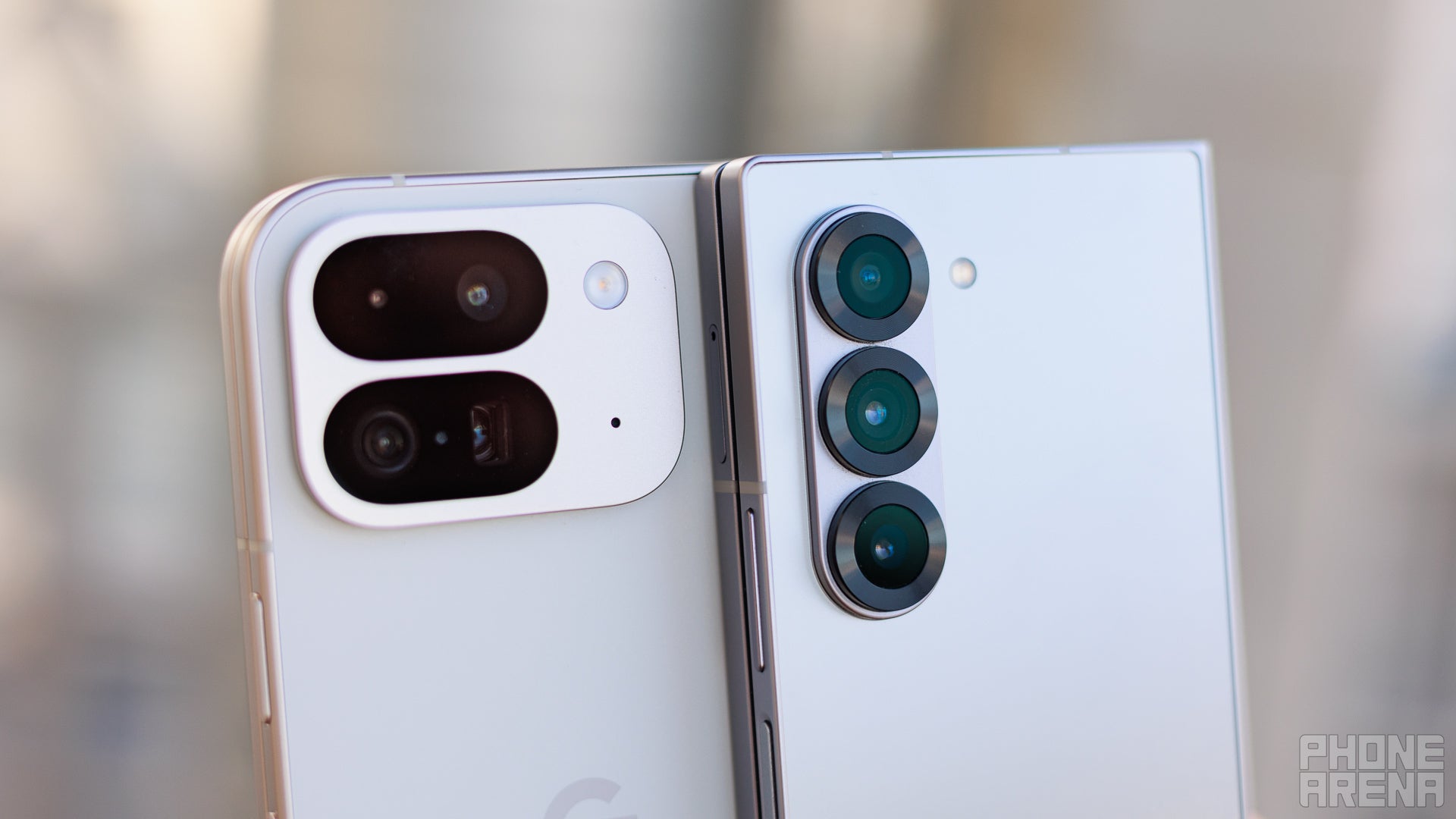

The Pixel 9 Pro Fold may have a Pro moniker, but Google wasn’t able to cram quite the amount of camera tech that the regular Pixel 9 Pro has in there. That’s to say, it has a 48 MP main camera, 12 MP ultra-wide, 10.5 MP 5x telephoto camera with a maximum of 20x Super Res zoom. That’s kind of around the same specs we have on the Z Fold 6 — with its 50 MP main, 12 MP ultra-wide, and 10 MP 3x telephoto camera, 30x maximum digital zoom.
That’s a bit weird — all other Pixel 9 devices got brand-new cameras, that are supposedly the best cameras Google has ever had. The Pixel 9 Pro Fold, despite bearing the Pro moniker, has last year’s specs.
Then again, so does the Galaxy Z Fold 6. Samsung’s new image processing did improve the camera performance of the Z Fold 6, though. So the Pixel 9 Pro Fold may surprise us just yet! Jury out until we get to test it extensively.
Main Camera
If you’re using either of these phones as a camera, there’s really not a lot to complain about. When we put them side by side, we can see some differences in the color science — Samsung will Samsung always, meaning greens are boosted and the skies can sometimes look unnatural. The same can be said about the Pixel in a different direction — it tends to have a magenta cast and slightly less contrast, which has been a signature look for some years now. In details, more often than not, the Samsung gives us sharper lines, but there have been a couple of samples where the Pixel sharpened objects a bit better.
At night, the Galaxy Z Fold 6 truly shines with sharper details, striking contrast, and vibrant colors. The Pixel 9 Pro Fold photos start looking washed out, yellowish, and plain less exciting.
Zoom Quality
When zooming at 10x, we can see that the Z Fold 6’s 3x camera is kind of tapping out. The software post-processing tried some trickery here and smudged a blue color all over the sign — a color that’s not there and is obviously a huge blob of noise reduction and trying to make sense of what the object is. The Pixel 9 Pro Fold has a 5x zoom lens, so already a better jumping-off point. At 10x, it gives us sharper, more legible details.
Ultra-wide Camera
The Galaxy Z Fold 6 processes its ultra-wide shots a bit more, it seems, and the result is a more striking image with boosted contrast, livelier colors, and sharper detail. It’s just more fun and energetic, while the Pixel 9 Pro Fold ultra-wide shots are kind of just… there. Not bad, informative, but not wow-ing.
Selfies
The Galaxy’s propensity to boost certain colors and dynamics may give you selfies that look a bit too vibrant, a bit off with the skintones. The Pixel 9 Pro Fold sticks a bit closer to reality, in terms of colors, but its details are definitely softer.
Battery Life and Charging
Does the Pixel get a downgrade?
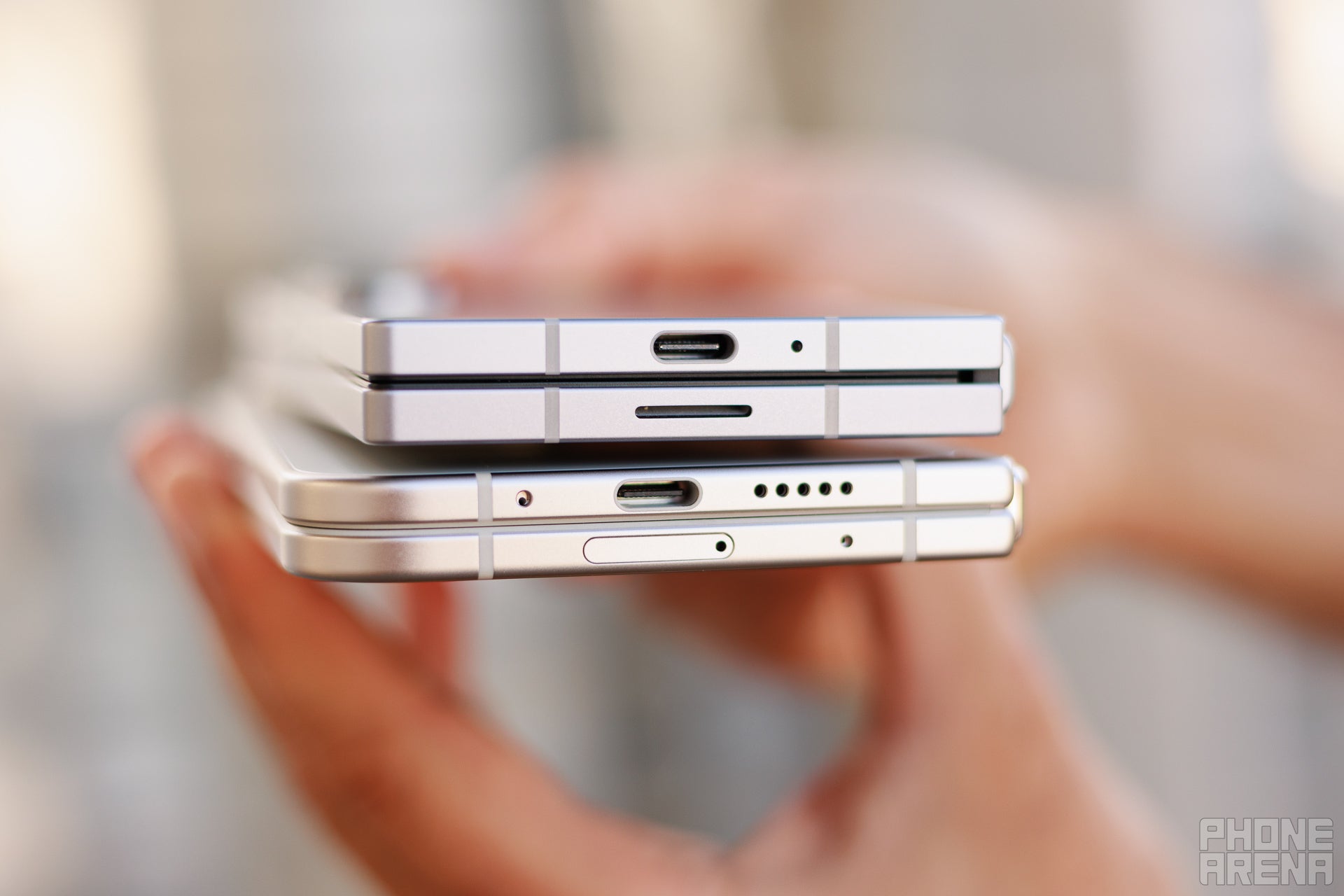

The Google Pixel 9 Pro Fold now comes with a 4,650 mAh battery — that’s smaller than the OG Pixel Fold‘s 4,821 mAh cell. It’s early to comment on endurance — Google does say that the Tensor G4 has better energy-efficiency than before.
The Galaxy Z Fold 6 has a 4,400 mAh cell, and while it’s not quite a marathon runner, we definitely trust it to take us through a day.
PhoneArena Battery Test Results:
In line with that single-core score above, we can see that when the Pixel is doing simple things — like running a web script that constantly scrolls through reloading web pages — it can be more efficient than the Galaxy Z Fold 6. But the Samsung phone outshines it in tasks that are naturally heavier — like streaming a never-ending YouTube playlist or playing 3D games.
PhoneArena Charging Test Results:
The Pixel 9 Pro Fold charges with 21 W on the wire, despite some misleading marketing talk pointing upwards to 37 W. The Z Fold 6 juices up with 25 W power. As a result, both of these phones charge up at relatively the same pace. For wireless charging — the Pixel 9 Pro Fold charges with 7.5 W of power, the Z Fold 6 supports the latest 15 W fast standard.
Specs Comparison
| Specs | Pixel 9 Pro Fold | Galaxy Z Fold 6 |
|---|---|---|
| Dimensions | 6.1 x 5.9 x 0.2 in (155.2 x 150.2 x 5.1 mm) |
6.04 x 5.22 x 0.22 in (153.5 x 132.6 x 5.6 mm) |
| Weight | 237 g | 239 g |
| Screen | 8″ main screen Super Actua, 120 Hz 6.3″ cover screen Actua, 120 Hz |
7.6″ main screen Dynamic AMOLED 2X, 120 Hz 6.3″ cover screen Dynamic AMOLED 2X, 120 Hz |
| Processor | Google Tensor G4 | Qualcomm Snapdragon 8 Gen 3 for Galaxy |
| RAM, Storage and Price | 16 GB / 256 GB for $1,799 | 12 GB / 256 GB for $1,899 |
| Cameras | 48 MP main 12 MP ultra-wide 10.5 MP telephoto 5x 10 MP front |
50 MP main 12 MP ultra-wide, f/2.2 10 MP telephoto 3x 10 MP front |
| Battery Size | 4,650 mAh | 4,400 mAh |
| Charging Speeds | 21 W wired 7.5 W wireless |
25 W wired 15 W wireless |
Which one should you buy?
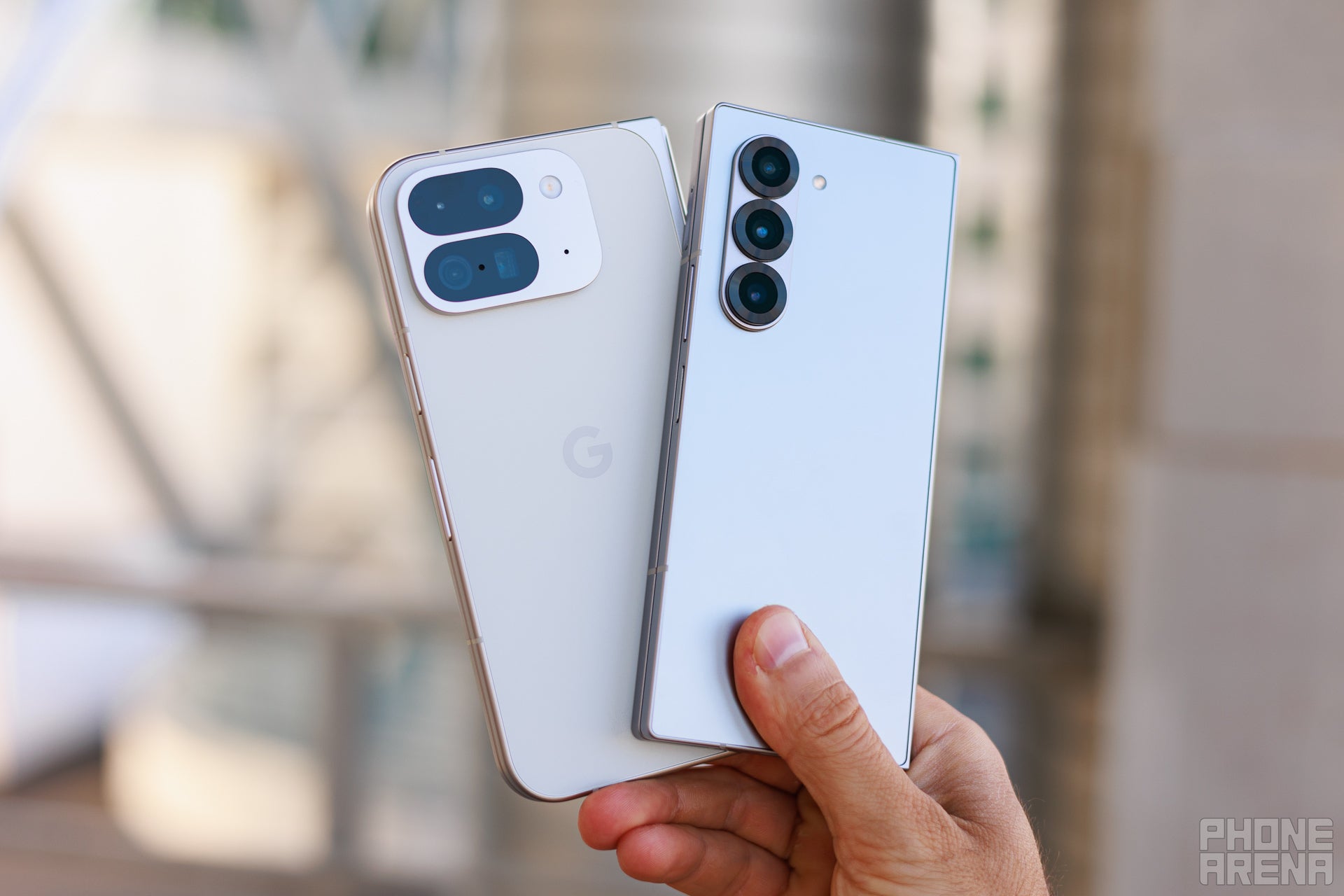

This is a question that is kind of tough. Both of these phones have excellent pros and head-scratching cons. The Z Fold 6 still has a lot going for it thanks to that S Pen support and Samsung DeX. If you are getting a foldable for productivity reasons — that DeX feature is just such a nice extra to have, even if you don’t end up using it regularly. However, you should also seriously consider what type of external screen you want on your foldable. Samsung insists it has to be narrow, so you’d have a reason to actually open up the phone and use that main display. In Samsung’s eyes, a foldable should be a 2-in-1 in a sense that it’s both a 2-hand phone and 1-hand phone.
The Pixel, on the other hand, has a spatious external display — so much so that you may end up having days where you don’t open the phone up at all. You might end up asking yourself “Why did I even spend $1799 on a foldable?”. And when you open it up — it’s very nice, for split screen, for articles, for video calls, sure. But there will always be a part of you nagging “Is this all there is?” — a void, which Samsung fills with the S Pen support and the DeX via external monitor.
Add to that the fact that the Galaxy Z Fold 6‘s processor runs laps around Google’s Tensor G4 and you can see how we are favoring the Galaxy Z Fold 6 in this comparison. And, in that camera versus, the Z Fold 6 ultimately came out on top for most case scenarios.
We can definitely see the allure of the Pixel 9 Pro Fold, with its exclusive Gemini and Pixel Studio features, and we will keep using it over the next weeks to see if anything changes. It’s still slim, cool, and pretty. We are currently giving a soft win to Samsung.
Source link


